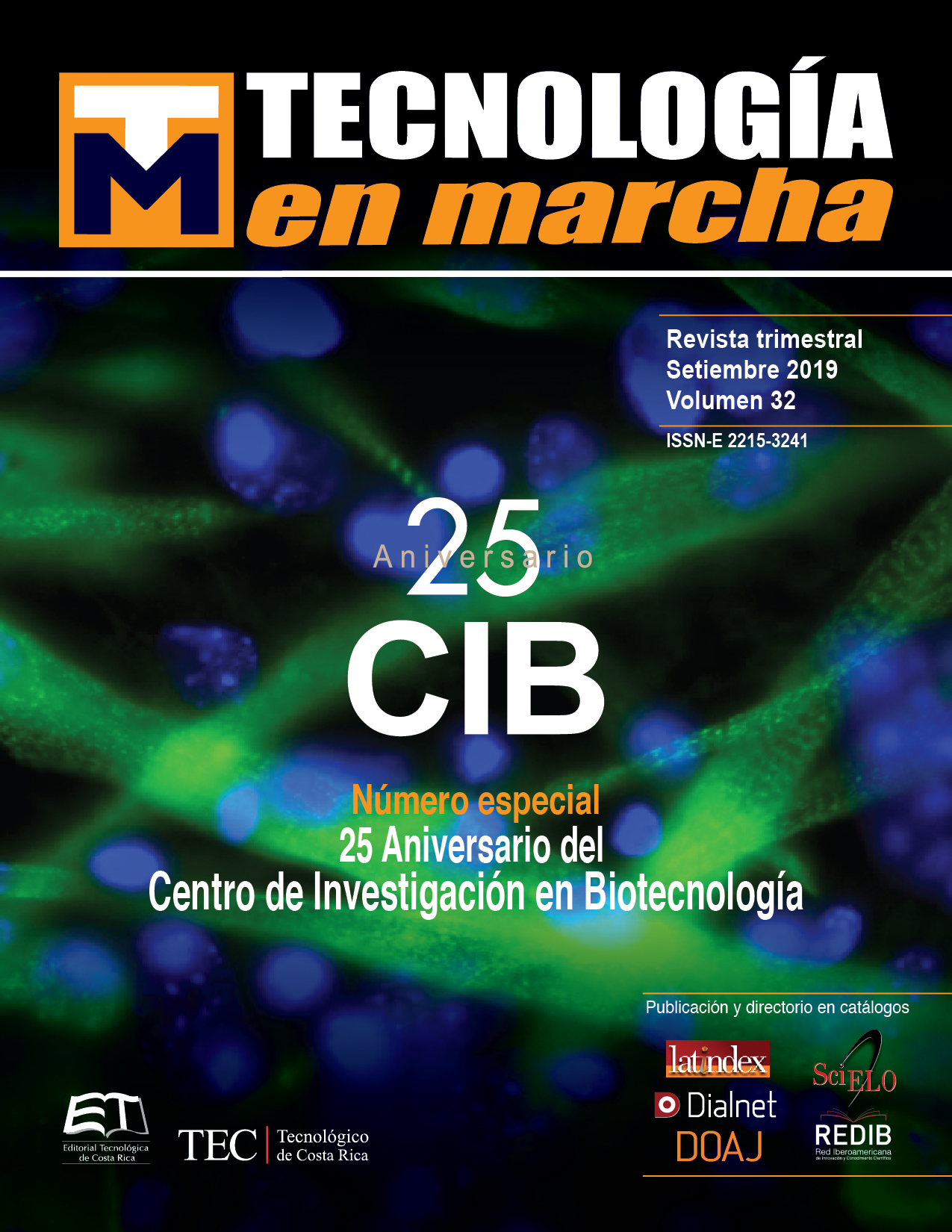Insects and biotechnology: social wasps as a source for novel antibiotic compounds
Main Article Content
Abstract
Insects are key organisms on natural and artificial ecosystems like cities and crops; for this reason, insects have been studied for a long time. Nevertheless, with the emergence of biotechnology, insect research is changing. Social insects for example, are of special interesting because of the symbiotic relationship they maintain with microorganisms to produce antibiotics to protect their colonies. In consequence two studies have been developed at the Biotechnology Research Center (CIB) of Costa Rica Institute of Technology (ITCR), to determine if social wasps stablish symbiotic relationships with actinobacteria and to test their antibiotic activity. We isolated 49 actinomycete morphotype strains from breeding cells, antibiotic activity was test in 45 strains and 80% (N=36) were effective against pathogens. Another research aims to isolate actinobacteria from the salivary glands and cuticle of adults, because according to behavior observations, these individuals could spread antibiotic compounds in the nest. Preliminary results demonstrate that Epiponini wasps stablish symbiotic relationships with actinomycetes, and strains could have antibiotic activity against human pathogens. These results demonstrate that social wasps could be used to develop innovative biotechnological research.
Article Details

This work is licensed under a Creative Commons Attribution-NonCommercial-NoDerivatives 4.0 International License.
Los autores conservan los derechos de autor y ceden a la revista el derecho de la primera publicación y pueda editarlo, reproducirlo, distribuirlo, exhibirlo y comunicarlo en el país y en el extranjero mediante medios impresos y electrónicos. Asimismo, asumen el compromiso sobre cualquier litigio o reclamación relacionada con derechos de propiedad intelectual, exonerando de responsabilidad a la Editorial Tecnológica de Costa Rica. Además, se establece que los autores pueden realizar otros acuerdos contractuales independientes y adicionales para la distribución no exclusiva de la versión del artículo publicado en esta revista (p. ej., incluirlo en un repositorio institucional o publicarlo en un libro) siempre que indiquen claramente que el trabajo se publicó por primera vez en esta revista.

